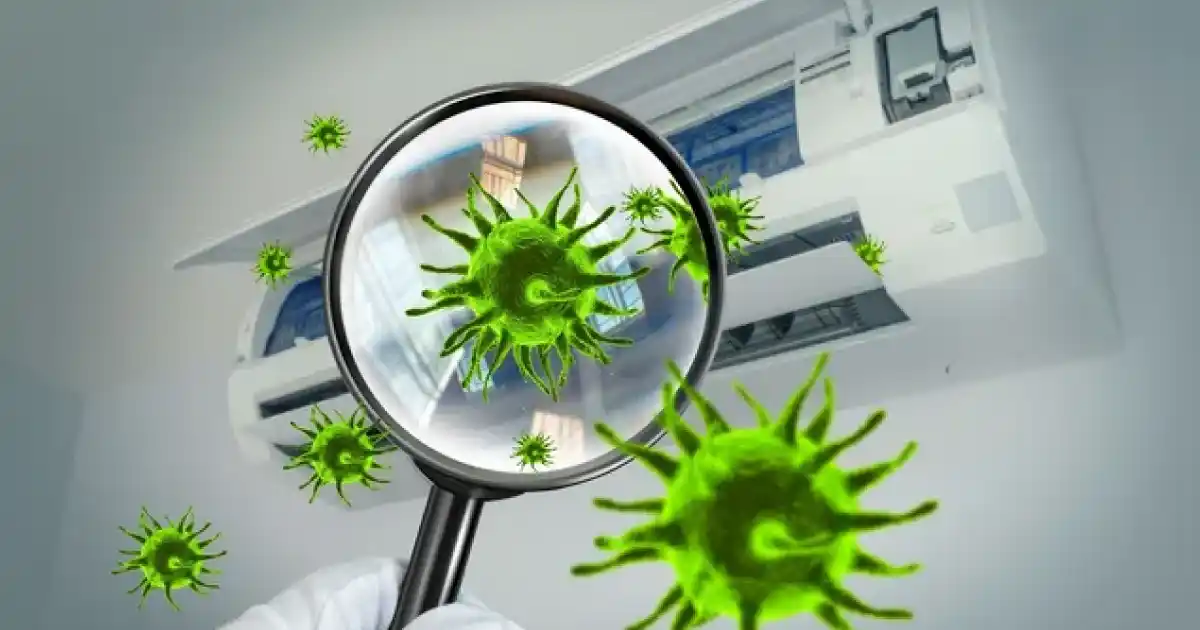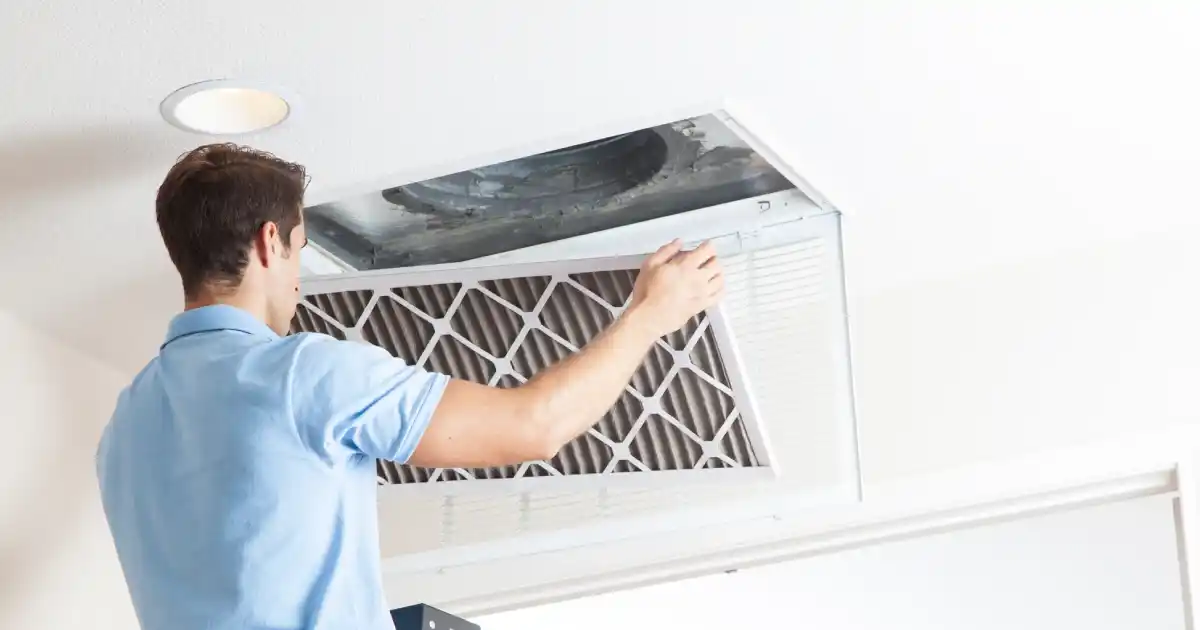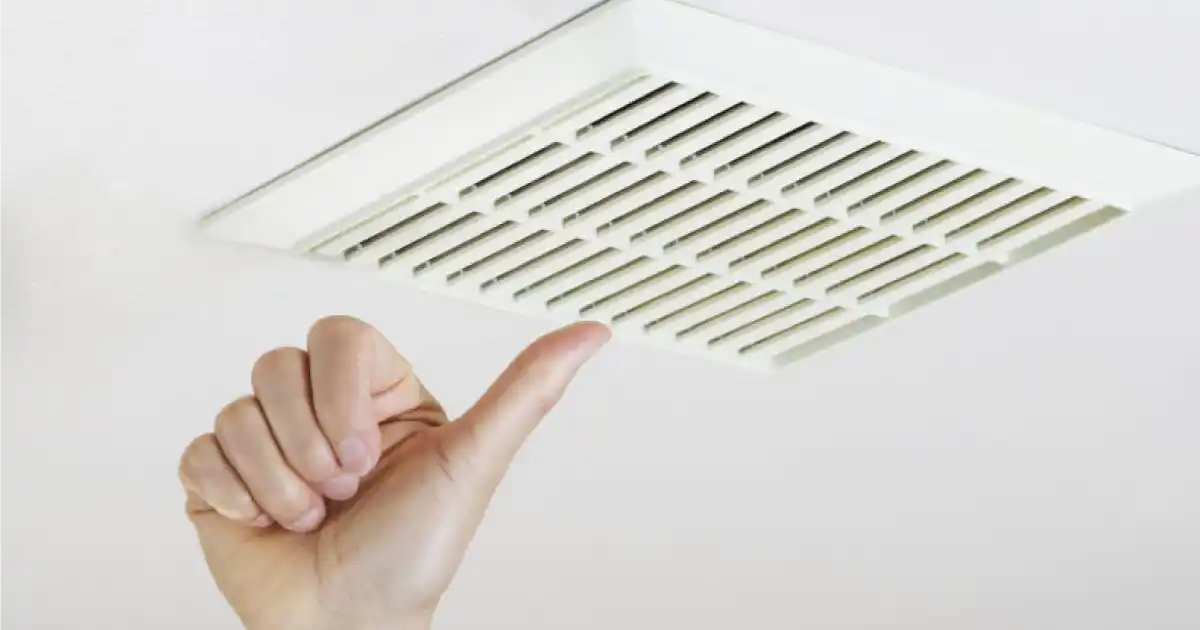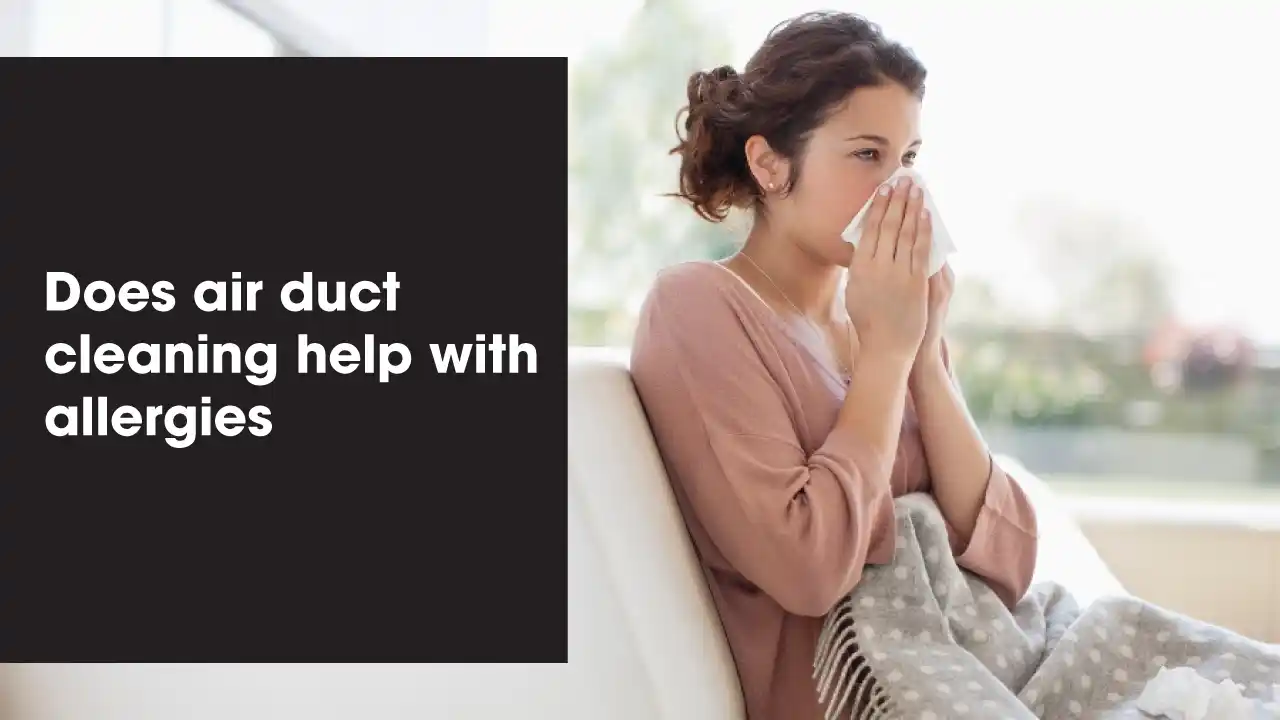Constantly battling with allergy symptoms? While seeking relief, many homeowners stumble upon the suggestion of air duct cleaning. But does this deep clean truly hold the key to allergy-free living, or is it just another overhyped home improvement trend? Should you clean dirty air ducts to avoid allergies?
Does air duct cleaning help with allergies? While air duct cleaning might remove allergens, the evidence for its direct impact on reducing allergy symptoms is uncertain.
Today, we will delve into the science behind the connection between allergies & duct cleaning, debunk common myths, and uncover the real impact of air duct cleaning on your allergy woes.
Air Duct Cleaning and Allergies

Our homes harbor a network of air ducts, acting as the lungs of the building. Unfortunately, these ducts can also become breeding grounds for allergens like dust mites, pet dander, and pollen.
Studies by the National Institute of Environmental Health Sciences (NIEHS) have demonstrated a link between elevated dust mite allergen levels in homes and increased asthma symptoms in children, highlighting the potential impact of trapped allergens on respiratory health.
But removing this built-up debris might seem like a definitive solution. Research on the effectiveness of air duct cleaning for allergy relief presents a mixed picture. A 2017 review published in the Journal of Allergy and Clinical Immunology concluded that the evidence for symptom reduction is limited.
In some scenarios, cleaning can even promote the problem–
Disturbing Allergens: Many people commented that my allergies are worse after having my air ducts cleaned. The cleaning process itself can stir up dust and allergens, temporarily worsening symptoms.
Improper Cleaning: Ineffective methods or neglecting crucial components can leave allergens behind, negating the intended benefits.
Unnecessary Expense: If your ducts are not visibly dirty or moldy, cleaning might be unnecessary and incur high costs.
So, what does this mean for you? Air duct cleaning can potentially offer benefits in specific situations, but it’s not a guaranteed solution.
Here’s what you need to consider in that case–
- Consult your doctor: Seek the expert advice of your allergist to assess your individual needs and determine if cleaning might be beneficial.
- Target the root cause: Addressing the source of allergens, like pets or outdoor dust, is crucial for long-term symptom management.
- Consider Severity: If your allergies are severe and unresponsive to other methods, cleaning might be worth exploring, especially if visible concerns exist within your ducts.
- Target your triggers: Are your allergies seasonal or year-round? Cleaning might be more beneficial for year-round triggers confirmed to be harbored in your ducts.
Indoor Allergy Symptoms
- Itchy, stuffy nose
- Runny nose
- Sneezing
- Itchy, watery, swollen, bloodshot eyes
- Scratchy, swollen throat
- Coughing
- Wheezing
- Tightness in the chest and shortness of breath
Benefits of Air Duct Cleaning for Allergies

While the effectiveness of air duct cleaning for allergies remains a topic of debate, there are some potential benefits to consider–
- Allergen Removal: Dust, dander, and pollen can accumulate in your air ducts, constantly recirculating and triggering allergy symptoms. When done properly, air duct cleaning can remove these trapped allergens, creating a cleaner breathing environment.
- Improved Indoor Air Quality: Dust, mold, and other contaminants trapped in ducts can impact your overall indoor air quality. Removing them can create a cleaner, healthier environment, potentially benefiting allergy sufferers and individuals with respiratory conditions like asthma.
- Reduced Symptoms: By eliminating a significant source of allergens, air duct cleaning may potentially lead to fewer allergy symptoms like sneezing, coughing, and itchy eyes. This can be particularly helpful for individuals with asthma or other respiratory conditions.
- Reduced Odors: Musty smells clinging to your home? Trapped odors in the ducts can be the culprit. Air duct cleaning eliminates these unwanted scents, leaving your house smelling fresh and inviting.
- Efficiency Boost: Clogged ducts not only harbor allergens, but they also force your HVAC system to work harder, raising your energy bills and potentially shortening its lifespan. Regular cleaning can improve airflow, leading to smoother operation and, in some cases, even reducing energy consumption.
How Does Allergen Get Into Your Air Duct?
You’ve learned about the potential benefits and limitations of air duct cleaning for allergies, but have you ever wondered– how do those allergens even get in there? Let’s have a look–
- Outdoor Allergens: Pollen, mold spores, and other outdoor allergens can enter buildings through open doors and windows and can be carried inside on clothing, shoes, or pets.
- Indoor Allergens: Common indoor allergens such as dust mites, pet dander, and mold can accumulate on surfaces like furniture and carpets. These allergens become airborne as air circulates and is drawn into the air ducts.
- Poor Ventilation and Humidity: High humidity levels and poor ventilation can create conditions conducive to mold growth and allow allergens to linger in the air, increasing the risk of accumulation in air ducts.
- Construction or Renovation Activities: Dust, debris, and construction materials introduced during building or renovation projects can find their way into air ducts, adding to the allergen burden within the system.
When to Consider Air Duct Cleaning for Allergies

Knowing when to prioritize air duct cleaning can make a significant difference in managing allergy symptoms and maintaining indoor air quality. Here are some key indicators to consider–
- Visible Mold or Mildew: If you spot mold growth inside your air ducts or on other HVAC components, it’s crucial to address it promptly to prevent airborne mold spores from exacerbating allergies.
- Excessive Dust or Debris: Suppose you notice unusual dust coming from your vents or visible debris inside the ductwork. In that case, professional cleaning may be necessary to improve air quality.
- Recent Construction or Renovations: After construction, dust and debris can accumulate in air ducts, impacting indoor air quality. Consider cleaning your ducts post-renovation to remove these contaminants.
- Persistent Pet Odors or Dander: Pet owners may experience increased allergens from pet dander and odors. If you notice persistent pet-related odors or allergy symptoms, cleaning your air ducts can help reduce allergen levels.
- Worsening Allergy Symptoms: If allergy symptoms worsen despite efforts to mitigate allergen exposure, consider cleaning your air ducts. Allergens trapped in ducts can recirculate, perpetuating symptoms.
- Specific Trigger Confirmation: If your doctor pinpoints specific allergy triggers confirmed to reside within your ducts (like dust mites), then targeted cleaning might be beneficial.
Additional Tips for Allergy Management
While air duct cleaning can improve indoor air quality and potentially alleviate allergy symptoms, it’s crucial to remember it’s only one part of the scenario.
Here are some additional, highly effective tips to manage your allergies and create a healthier living environment–
- Regular Cleaning: Regularly dusting, vacuuming, and mopping can help reduce allergens such as dust mites, pet dander, and pollen accumulating on surfaces.
- Use HEPA Filters: Invest in HEPA air purifiers for your home and consider replacing furnace filters with HEPA-grade options. These filters trap allergens before circulating in your air, offering continuous protection.
- Humidity Control: Maintain humidity levels between 30-50% with a dehumidifier to discourage mold growth and dust mite proliferation. Invest in a hygrometer to monitor humidity levels effectively.
- Seal Air Leaks: Seal gaps and cracks around windows, doors, and ductwork to prevent outdoor allergens from entering your home or building. Proper insulation and weather-stripping can also help maintain airtight seals and reduce energy costs.
- Track Your Triggers : Keep a diary to identify environmental factors that worsen your symptoms. Once you know your triggers, you can take steps to avoid them or minimize their impact.
Conclusion
Does air duct cleaning help with allergies? Air duct cleaning can offer some benefits, but it’s not a guaranteed solution for allergies.
At Stream Express, we prioritize your well-being. We offer high-quality air duct cleaning services with certified professionals and advanced techniques. If you decide cleaning might be right for you, contact us today for a free consultation!
FAQ
How often should I have my air ducts cleaned?
It is recommended to have your air ducts cleaned every 3 to 5 years or sooner if you notice signs of mold, excessive dust, or worsening allergy symptoms.
When might air duct cleaning be helpful for allergies?
If you have visible mold, pest infestations, recent renovations, or persistent, uncontrolled symptoms with confirmed duct-based triggers.
Can I clean my air ducts myself?
While it is possible to perform DIY air duct cleaning, professional cleaning services are recommended for the thorough removal of contaminants and optimal results.
Are there risks associated with air duct cleaning?
Improper cleaning can stir up dust and worsen symptoms. Choose qualified professionals who use proper techniques and source control.


